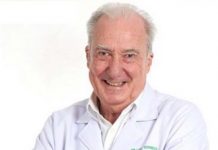We have just had three visiting American anesthetists lecturing at my hospital as part of our CME (Continuous Medical Education) requirements. It was interesting to exchange medical practices between Asia and the US.
One of the visitors, Dr. Tony Tsai, mentioned the history of anesthesia, so I thought we might look at that, this week. We marvel at the surgical advances in the past century, but while I take my hat off to the surgeons, the real praise goes to the anesthetists. Without the advances in anesthetics, brawny assistants would still be holding patients down while surgeons attacked with scalpels and saws and the patient lay there screaming.
Yes, that was the way it was up to around the Crimean War 150 years ago. The best surgeons were the quickest surgeons. The incredible searing pain only had to be endured for a shorter time. The famous surgeon, Dr. Pott, was able to disarticulate an ankle and dip the soggy end of the lower leg into boiling pitch in 15 seconds. Bite on the bullet for quarter of a minute! Yes, we have improved a little since then.
The first anesthetic agent was ether, dribbled on to a mask to knock the patient out and allow the surgeon to take his time and become meticulous in his approach. The first public demonstration of ether anesthesia took place on 16 October 1846, at Massachusetts General Hospital in Boston. The anesthetist was William Morton and the surgeon was John Warren; and the operation was the removal of a lump under the jaw of a Gilbert Abbott. Those three have left their mark in medical history.
While there have been enormous advances since then, I can remember being a medical student and assisting at an operation in outback Australia in 1964. The anesthetic was ether, dribbled on to the patient’s gauze mask by the matron of the public hospital, and it was a Caesarian section for twins. There was no air-conditioning and it was 43 degrees in the theatre, where the fumes were making us all woozy. Amazingly everyone survived the ordeal, mother, twin sons, the local doctor, the matron and me.
Despite outback Australia, anesthesia progressed in the rest of the world. Chloroform was introduced by James Simpson, the Professor of Obstetrics in Edinburgh, in November 1847. This was a more potent agent but it had more severe side effects, including sudden death. However, it worked well and was easier to use than ether and so, despite its drawbacks, became very popular.
The next major advance was the introduction of local anesthesia – cocaine – in 1877. Things definitely did go better with ‘coke’! Then came local infiltration, nerve blocks and then spinal and epidural anesthesia, which in the 1900s allowed surgery in a relaxed abdomen, and is still used today, especially in obstetric anesthesia, where the mother can be anaesthetized without the baby being affected as well.
The next important innovation was the control of the airways with the use of tubes placed into the trachea. This permitted control of breathing and techniques introduced in the 1910s were perfected in the late 1920s and early 1930s. Then came the introduction of intravenous induction agents. These were barbiturates which enabled the patient to go off to sleep quickly, smoothly and pleasantly and therefore avoided any unpleasant inhalational agents. Then in the 1940s and early 1950s, there came the introduction of muscle relaxants, firstly with curare (the South American Indian poison, but not administered by native blowpipe) and then agents less dangerous.
In the mid 1950s came halothane, a revolutionary inhalation agent, which was much easier to use, but now superseded by even more potent, but less dangerous anesthetic agents.
According to Dr David Wilkinson of the Association of Anesthetists of Great Britain and Ireland, “Anesthesia is now very safe, with mortality of less than 1 in 250,000 directly related to anesthesia. Nevertheless, with today’s sophisticated monitoring systems and a greater understanding of bodily functions, the anesthetic profession will continue to strive for improvement over the next 150 years.”
On behalf of all patients requiring surgery in the future, may I thank Dr. Tony Tsai and his colleagues all over the world. No longer do they have to bite on a bullet!




